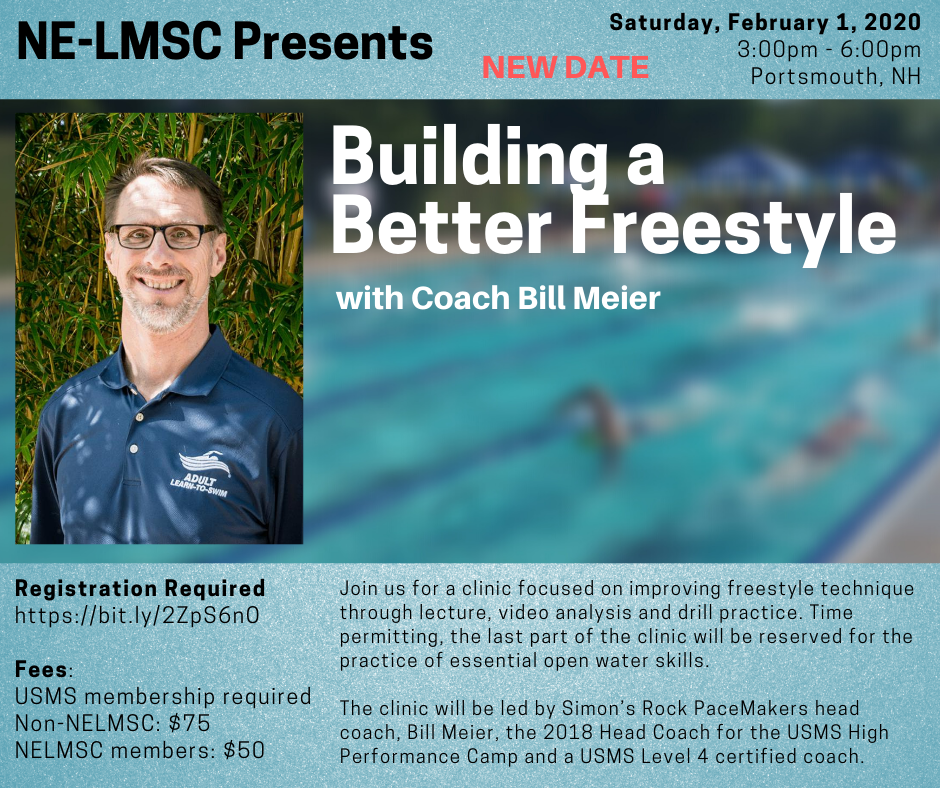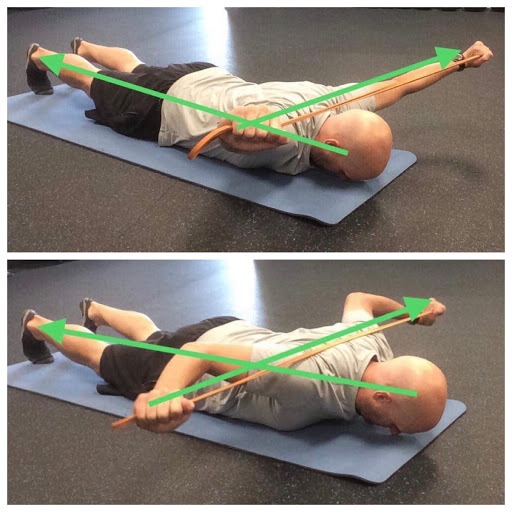Contributed by Laura Dennison, NELMSC Para-Athlete Chair
I, like many of my teammates, have just finished a long day of work. The bustle of the workday is still present in my head as I slide on my cap and goggles and hop into the water. I look quickly at the set, and part of me wonders how I will make it through after such a long day. I sigh and begin to pull and move my body across the pool. I look straight down at the black line and turn my head slightly to breathe, noticing my teammates in the lane next to me, before returning to that black line. It is the black line that has given me so much comfort, camaraderie, and strength over seven years of competitive swimming. As I look over at my teammates, I know that they, too, are staring at that same black line that gives me so much consistency; the only difference is how I propel myself across the pool.
Laura Dennison (front middle) with Charles River Masters teammates (clockwise) Sherene Shenouda, Joanne Barker, and Baheya Shenouda.
I often hear statements from people, well-meaning, like: “Wow, it is really great you are in the water.” Well, if what I’m doing gets someone off the couch, that’s great, but that’s not why I do it. I do it for the same reason that my masters teammates do it. I want to swim with others, get a good workout in, socialize, and compete. I do it for the absolute love of the sport. It’s the feeling that I get when I compete in a relay with my teammates at a championship meet. It’s collectively working together to complete a 200 medley relay. I may swim with just my arms while they dive off the block. How each of us does it doesn’t matter. I do it for swimming—something that is bigger than all of us. Just like my teammates.
After all, it is the same black line.
What is Para Swimming?
The word para literally means alongside. World Para Swimming has three different impairment groups: physical, intellectual, and visual impairments. “There are ten different sport classes for athletes with physical impairment, numbered 1-10. The lower the number, the more severe the activity limitation. Athletes with different impairments compete against each other, because sport classes are allocated based on the impact the impairment has on swimming, rather than on the impairment itself.” [1] The classification system is a complicated one, but it is one that ensures competitions are as fair as possible. Athletes with a vision impairment compete in three sport classes from S/SB11 to S/SB13. Athletes with an intellectual impairment swim in the s14 classification. I personally compete in the S6 (freestyle, backstroke), SB5 (breaststroke), and SM6 (medley) classification, but I am up for review under a new classification system soon.
How can I include para swimmers in my workouts?
Say hello.
Engage in conversation. This may seem very basic, but we are all human and we are all here for the same reason.
Practice good communication.
If you are a coach, ask the swimmer what he or she wants to get out of the workout and talk about what they can do in the water. Every swimmer—para or not—is different, and each swimmer knows their body best.
If you are a teammate, communicate with others in the lane. I always tell my fellow teammates that they can swim around me, and I know where they are. I also know that if they are doing a 100, maybe I will do a 50 so that we start and stop at the same place; this is dependent on the individual swimmer.
Have fun!
We are all here for the love of swimming.





















